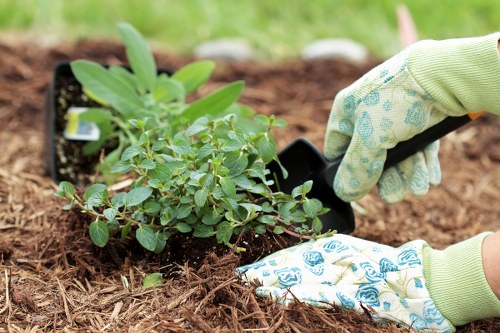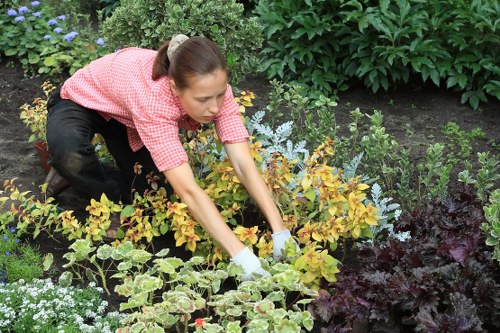Comprehensive Garden Maintenance in Neasden
 Welcome to the ultimate guide on garden maintenance in Neasden. Whether you're a seasoned gardener or just starting out, maintaining a beautiful garden requires dedication, knowledge, and the right strategies. In Neasden, the unique climate and local flora present both challenges and opportunities for gardeners seeking to create and sustain stunning outdoor spaces.
Welcome to the ultimate guide on garden maintenance in Neasden. Whether you're a seasoned gardener or just starting out, maintaining a beautiful garden requires dedication, knowledge, and the right strategies. In Neasden, the unique climate and local flora present both challenges and opportunities for gardeners seeking to create and sustain stunning outdoor spaces.
Effective garden maintenance involves a combination of regular tasks and seasonal care. From pruning and weeding to fertilizing and pest control, each aspect plays a crucial role in ensuring your garden thrives year-round. Understanding the specific needs of your plants and the conditions of your garden space in Neasden is essential for success.
Neasden's diverse environment allows for a variety of plants to flourish, but it also means gardeners must be adaptable. Factors such as soil quality, sunlight exposure, and rainfall patterns influence the growth and health of your garden. By tailoring your maintenance practices to these local conditions, you can achieve a vibrant and resilient garden.
Seasonal Garden Maintenance Tasks
Maintaining your garden throughout the year requires attention to seasonal changes. Each season brings its own set of challenges and opportunities for garden upkeep.
Spring: As the weather warms, it's time to prepare your garden for the growing season. This includes clearing away winter debris, planting new seeds, and starting regular watering schedules.
Summer: Hot and dry conditions in Neasden necessitate vigilant watering and pest management. Regular weeding and pruning help maintain plant health and appearance.
 Autumn: Fall is ideal for harvesting and preparing your garden for winter. Leaf removal, soil enrichment, and planting winter-hardy species are key tasks during this season.
Autumn: Fall is ideal for harvesting and preparing your garden for winter. Leaf removal, soil enrichment, and planting winter-hardy species are key tasks during this season.
Winter: While gardening activity slows, protective measures such as mulching and covering plants ensure your garden remains healthy during the colder months.
By adhering to seasonal maintenance schedules, you can ensure that your garden remains lush and vibrant throughout the year.
Neasden's climate necessitates specific care practices to address the fluctuations in weather. Understanding these seasonal needs is paramount for effective garden maintenance.
Soil Health and Fertilization
Healthy soil is the foundation of a thriving garden. In Neasden, the soil composition can vary, so it's important to assess and improve it as needed.
Soil Testing: Conducting a soil test helps determine nutrient levels and pH balance, guiding your fertilization strategy. This ensures that your plants receive the essential nutrients they need to grow robustly.
Organic Fertilizers: Utilizing organic options like compost and manure enhances soil structure and fertility. These natural fertilizers promote beneficial microbial activity, fostering a healthy root environment.
Irrigation Practices: Efficient watering systems, such as drip irrigation, conserve water and deliver moisture directly to plant roots. Proper irrigation techniques prevent overwatering and reduce the risk of disease.
 Maintaining optimal soil health through regular testing and appropriate fertilization is crucial for sustaining a vibrant garden in Neasden.
Maintaining optimal soil health through regular testing and appropriate fertilization is crucial for sustaining a vibrant garden in Neasden.
By investing in soil health, you lay the groundwork for long-term garden success.
Pest and Disease Management
Protecting your garden from pests and diseases is a critical aspect of maintenance in Neasden. A proactive approach ensures your plants remain healthy and vigorous.
Integrated Pest Management (IPM): IPM combines biological, cultural, and chemical practices to control pest populations effectively while minimizing environmental impact.
Common Pests: In Neasden, common garden pests include aphids, slugs, and caterpillars. Identifying these pests early allows for timely intervention.
Practicing regular inspections and maintaining plant health can reduce the likelihood of pest infestations.
 Disease Prevention: Preventing plant diseases involves proper spacing, adequate watering, and removing infected plant material. Ensuring good air circulation around plants also reduces disease risk.
Disease Prevention: Preventing plant diseases involves proper spacing, adequate watering, and removing infected plant material. Ensuring good air circulation around plants also reduces disease risk.
Implementing these strategies helps maintain a healthy garden environment, resilient against common threats.
Effective pest and disease management contributes to the overall vitality and beauty of your garden.
Pruning and Trimming Techniques
Regular pruning and trimming are essential for shaping plants, promoting growth, and removing dead or diseased branches.
When to Prune: The timing of pruning varies depending on the plant species. Understanding the growth cycles of your plants ensures that pruning enhances their development.
Using the right tools and techniques minimizes damage and promotes healthy growth.
Pruning Techniques: Techniques such as thinning, heading, and shaping help maintain plant structure and encourage fruit or flower production.
 Safety Measures: Always use sharp, clean tools to prevent the spread of disease. Wear protective gear to safeguard against injuries during pruning tasks.
Safety Measures: Always use sharp, clean tools to prevent the spread of disease. Wear protective gear to safeguard against injuries during pruning tasks.
Consistent pruning practices lead to robust and aesthetically pleasing plants in your garden.
By mastering these techniques, you can effectively manage plant growth and maintain a well-organized garden.
